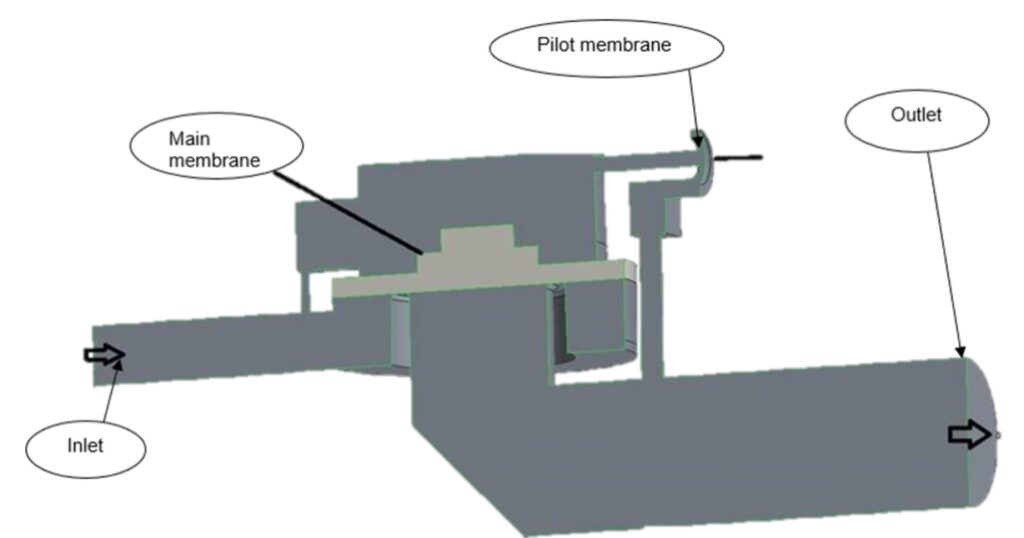Fluid-structure interaction (FSI) is a class of multiphysics problems that uses specific laws and equations from different physical disciplines to describe the impact of a flow field on the solid and vice-versa. The interaction between fluids and deformable solids has earned attention in the past few decades due to the variety of its industrial applications in different areas such as aerospace engineering, biomechanical and hydraulic industries.
Our CompMech member Ahmed Aissa Berraies, under the supervision of Prof. Ferdinando Auricchio (University of Pavia), Prof Harald van Brummelen (Eindhoven University of Technology) and in collaboration with Dr. Francesco Butera (co-founder and managing director of Dolphin Fluidics company), is working on a numerical two-way FSI simulation approach for the actuation process of a microfluidic pilot valve problem using partitioned methods [1]. Ahmed is currently investigating numerical methods for the interaction of a hyperelastic membrane with adjacent fluid flow.
The formulation of the coupled problem is introduced by a three-field formulation system [2]. The structural system is described using a Lagrangian form. The computational methods for the fluid are based on arbitrary Lagrangian-Eulerian (ALE) formulation employing boundary-fitted mesh. This strongly-coupled partitioned scheme is equipped with Dirichlet-Neumann boundary conditions. Both the fluid and the membrane are then interconnected by interface conditions [3]. This approach is implemented into the commercial software Ansys using its sub-packages: Ansys Mechanical, Ansys Fluent, and System coupling solvers.
During the design of the partitioned scheme for incompressible fluids, convergence and stability properties of the subiterations are sensitive to the ratio of the added mass (which represents the effect of the fluid on the structure) to the structural mass [4-5]. Moreover, the 3D geometry complexity and dynamic mesh are challenging in the presence of thin fluid cells near the solid surface [6]. Ahmed is working on proposing suitable methods allowing for a stable simulation process. We will carry out experimental tests in collaboration with Dolphin Fluidics for result comparison and validation purposes.
References
[1] Van Brummelen, “Partitioned iterative solution methods for fluid-structure interaction” 2010
[2] Charbel Farhat “CFD-based Nonlinear Computational Aeroelasticity,” 2004
[3] Van Brummelen and Geuzaine, “Fundamentals of Fluid-Structure Interaction” 2010
[4] Van Brummelen, “Added Mass Effects of Compressible and Incompressible Flows in Fluid-Structure Interaction,” 2009
[5] Causin, Gerbeau, Nobile, “Added-mass effect in the design of partitioned algorithms for fluid-structure problems,” 2005
[6] Tezduyar et al.,” Space-time finite element techniques for computation of fluid-structure interactions,” 2004
Acknowledgement
This work is part of the project funded by the European Union’s Horizon 2020 research and innovation programme under the Marie Sklodowska Curie (Grant Agreement N. 764636).
June 26th, 2020



